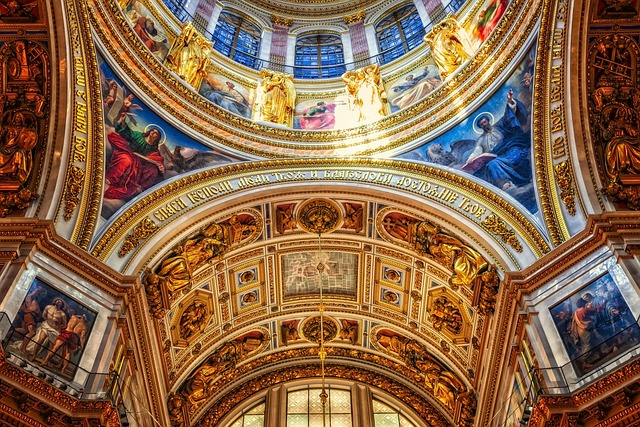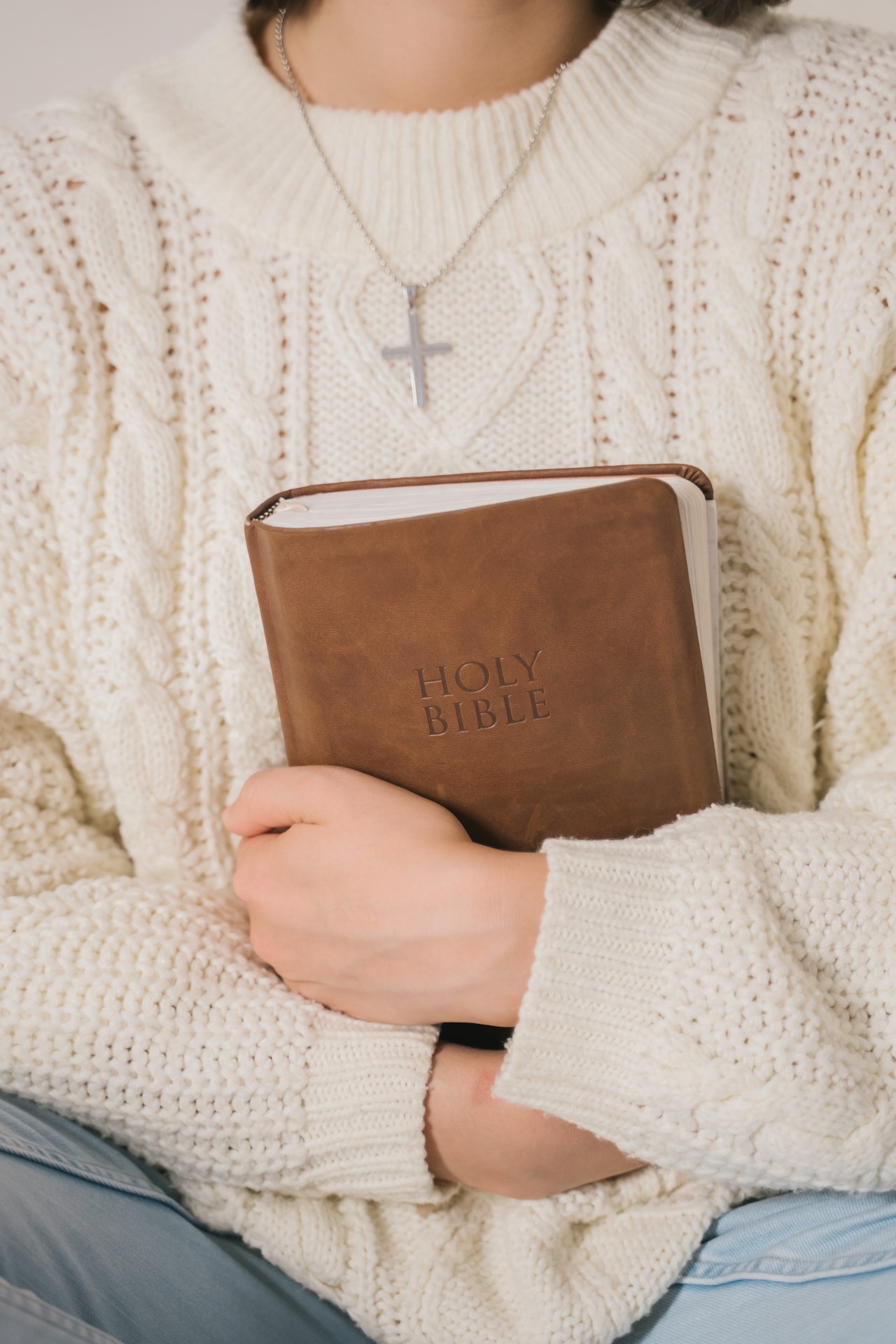Orthodox Christians engage in prayer as an integral part of their spiritual life. Prayer is seen as a means of connecting with God, seeking His guidance, and expressing gratitude. Orthodox Christians have a rich tradition of prayer, which includes various forms and practices. This introduction provides a brief overview of how Orthodox Christians pray.
Table of Contents
The Significance of Icons in Orthodox Christian Prayer
Orthodox Christianity is a rich and ancient tradition that encompasses a wide range of practices and beliefs. One of the most distinctive aspects of Orthodox Christian prayer is the use of icons. Icons are sacred images that are believed to be windows into the divine realm, and they play a significant role in the prayer life of Orthodox Christians.
Icons are not mere decorations or works of art in Orthodox Christianity. They are considered to be holy and are venerated as a means of connecting with the divine. When Orthodox Christians pray before an icon, they believe that they are not praying to the physical image itself, but rather to the person or event depicted in the icon. Icons are seen as a way to make the invisible visible, allowing believers to encounter the divine in a tangible way.
The use of icons in Orthodox Christian prayer can be traced back to the early centuries of Christianity. In the early church, icons were used to teach and inspire believers, especially those who were illiterate. They were also used as a way to commemorate and honor the saints and martyrs of the faith. Over time, the veneration of icons became an integral part of Orthodox Christian worship.
Icons are typically found in Orthodox churches, where they are displayed in a prominent place known as the iconostasis. The iconostasis is a screen or wall that separates the sanctuary from the nave, and it is adorned with icons of Christ, the Virgin Mary, and various saints. Orthodox Christians often light candles and offer prayers before these icons, seeking the intercession and guidance of the saints depicted.
The significance of icons in Orthodox Christian prayer goes beyond their visual representation. Icons are believed to be imbued with the presence and power of the divine. They are seen as a means of grace, through which believers can experience the love and mercy of God. Icons are also seen as a way to participate in the communion of saints, connecting with the faithful who have gone before and joining in their prayers.
Orthodox Christians approach icons with reverence and respect. They often kiss or touch the icons as a sign of devotion and humility. This physical interaction with the icons is seen as a way to express love and honor to the person or event depicted. It is also believed to be a way to receive blessings and healing from the divine.
In addition to their use in churches, icons are also found in Orthodox Christian homes. Many Orthodox families have a prayer corner or icon corner in their homes, where they display icons and offer prayers. This serves as a reminder of the presence of God in their daily lives and provides a focal point for their personal prayer and devotion.
The significance of icons in Orthodox Christian prayer cannot be overstated. They are not mere objects of worship, but rather tools for spiritual growth and connection with the divine. Icons serve as a visual representation of the faith and a means of encountering the sacred. Whether in a church or a home, icons are a tangible expression of Orthodox Christian prayer and devotion.
The Role of Repetition and Chanting in Orthodox Christian Prayer

Orthodox Christianity is a rich and ancient tradition that encompasses a wide range of practices and beliefs. One of the most distinctive aspects of Orthodox Christian prayer is the use of repetition and chanting. These practices play a vital role in the spiritual life of Orthodox Christians, helping them to connect with God and deepen their faith.
Repetition is a fundamental element of Orthodox Christian prayer. It is believed that by repeating certain prayers or phrases, believers can enter into a state of deep contemplation and communion with God. This repetition serves as a form of meditation, allowing individuals to quiet their minds and focus their thoughts on the divine.
One of the most well-known repetitive prayers in Orthodox Christianity is the Jesus Prayer. This simple prayer, “Lord Jesus Christ, Son of God, have mercy on me, a sinner,” is repeated over and over again as a way of seeking God’s mercy and forgiveness. By repeating this prayer, Orthodox Christians hope to cultivate a sense of humility and repentance, acknowledging their own shortcomings and seeking God’s grace.
Chanting is another important aspect of Orthodox Christian prayer. Chants are melodic and rhythmic prayers that are sung or recited in a specific manner. They are often accompanied by the use of musical instruments, such as bells or cymbals, to enhance the spiritual experience.
Chanting serves several purposes in Orthodox Christian prayer. First and foremost, it helps to create a sacred atmosphere, elevating the prayers to a higher level of spiritual intensity. The melodic and rhythmic nature of chanting also aids in concentration and focus, allowing individuals to enter into a deeper state of prayer.
In addition to these practical benefits, chanting is also seen as a way of participating in the heavenly worship of angels and saints. Orthodox Christians believe that when they chant, they are joining their voices with the heavenly choir, offering their prayers and praises to God alongside the celestial beings.
The use of repetition and chanting in Orthodox Christian prayer is not meant to be mindless or mechanical. Rather, it is a way of engaging the whole person in prayer – body, mind, and spirit. By repeating prayers and chants, individuals are able to fully immerse themselves in the act of prayer, allowing it to permeate every aspect of their being.
Furthermore, repetition and chanting help to create a sense of unity and community among Orthodox Christians. When believers gather together to pray, their voices blend together in harmony, creating a powerful and uplifting experience. This communal aspect of prayer is an integral part of Orthodox Christian worship, reinforcing the idea that the Church is a body of believers who are united in their faith.
In conclusion, repetition and chanting play a significant role in Orthodox Christian prayer. These practices help believers to enter into a state of deep contemplation and communion with God, fostering humility, repentance, and a sense of unity. Whether through the repetition of prayers or the melodic chanting of hymns, Orthodox Christians find solace and spiritual nourishment in these ancient and sacred practices.
The Importance of Fasting and Prayer in Orthodox Christian Tradition
Orthodox Christianity is a rich and ancient tradition that places great emphasis on the importance of fasting and prayer. These practices are seen as essential for spiritual growth and deepening one’s relationship with God. In this article, we will explore the significance of fasting and prayer in the Orthodox Christian tradition and how they are practiced.
Fasting is a common practice among Orthodox Christians and is seen as a way to discipline the body and focus the mind on spiritual matters. It involves abstaining from certain foods, such as meat, dairy, and oil, during specific times of the year. The most well-known fasting period is Lent, which lasts for forty days leading up to Easter. During this time, Orthodox Christians engage in a strict fast, abstaining from all animal products.
The purpose of fasting is not simply to deny oneself of certain foods, but rather to cultivate self-control and humility. By abstaining from certain pleasures, Orthodox Christians believe they can better focus on their spiritual life and draw closer to God. Fasting is seen as a way to purify the body and soul, making it more receptive to the grace of God.
In addition to fasting, prayer is another essential aspect of Orthodox Christian tradition. Prayer is seen as a way to communicate with God and seek His guidance and blessings. Orthodox Christians engage in both personal and communal prayer, with the most common form being the Jesus Prayer. This simple prayer, “Lord Jesus Christ, Son of God, have mercy on me, a sinner,” is repeated continuously as a way to focus the mind and open the heart to God’s presence.
Orthodox Christians also have a rich tradition of liturgical prayer, which is conducted in the context of the Divine Liturgy. The Divine Liturgy is the central worship service of the Orthodox Church and is celebrated every Sunday and on major feast days. It involves a combination of prayers, hymns, and readings from the Scriptures. The liturgy is seen as a participation in the heavenly worship and a foretaste of the Kingdom of God.
In addition to fasting and prayer, Orthodox Christians also engage in other spiritual practices, such as almsgiving and reading the Scriptures. Almsgiving is seen as a way to show love and compassion to others, while reading the Scriptures is seen as a way to nourish the mind and deepen one’s understanding of God’s Word.
Overall, fasting and prayer are central to the Orthodox Christian tradition. They are seen as essential practices for spiritual growth and deepening one’s relationship with God. Through fasting, Orthodox Christians seek to discipline the body and cultivate self-control, while prayer is a means of communication with God and seeking His guidance and blessings. These practices, along with others such as almsgiving and reading the Scriptures, form the foundation of Orthodox Christian spirituality. By engaging in these practices, Orthodox Christians strive to live a life of holiness and draw closer to God.
Exploring the Divine Liturgy: A Guide to Orthodox Christian Worship
Orthodox Christianity is a rich and ancient tradition that has been passed down through generations. One of the most important aspects of Orthodox Christian worship is prayer. Prayer is seen as a way to communicate with God and to seek His guidance and blessings. In this article, we will explore how Orthodox Christians pray and the significance of prayer in their spiritual lives.
Orthodox Christians have a deep reverence for prayer and believe that it is a vital part of their relationship with God. They view prayer as a way to connect with the divine and to seek His will in their lives. Prayer is not seen as a mere ritual or obligation, but as a heartfelt conversation with God.
In Orthodox Christian worship, prayer takes many forms. One of the most common forms of prayer is the Divine Liturgy, which is the central worship service of the Orthodox Church. The Divine Liturgy is a beautiful and elaborate service that includes prayers, hymns, and readings from the Bible. It is a time for the faithful to come together as a community and to offer their prayers and praises to God.
During the Divine Liturgy, Orthodox Christians pray for a variety of things. They pray for the well-being of their loved ones, for the needs of the world, and for their own spiritual growth. They also offer prayers of thanksgiving for the blessings they have received and prayers of repentance for their sins. Prayer is seen as a way to express gratitude, seek forgiveness, and ask for God’s guidance and protection.
Orthodox Christians also have a rich tradition of personal prayer. They believe that prayer should be a regular part of their daily lives and that it should be done with sincerity and humility. Personal prayer can take many forms, from reciting traditional prayers to offering spontaneous prayers from the heart. The important thing is to approach prayer with a spirit of reverence and openness to God’s presence.
In Orthodox Christian prayer, there is a strong emphasis on the use of icons. Icons are sacred images that depict Christ, the Virgin Mary, and the saints. They are seen as windows into the divine and are used as aids in prayer. Orthodox Christians often light candles before icons and offer prayers of intercession to the saints depicted in the icons. Icons are seen as a way to focus the mind and heart on God and to seek His presence and guidance.
Another important aspect of Orthodox Christian prayer is the use of repetitive prayers. These prayers, known as “Jesus Prayer” or “prayer of the heart,” involve the repetition of a short phrase such as “Lord Jesus Christ, Son of God, have mercy on me, a sinner.” The purpose of these repetitive prayers is to quiet the mind and to bring the person into a state of deep concentration and communion with God. Orthodox Christians believe that through the repetition of these prayers, they can enter into a deeper awareness of God’s presence and experience His grace and love.
In conclusion, prayer is a central and cherished aspect of Orthodox Christian worship. It is seen as a way to communicate with God, seek His guidance, and experience His presence. Whether through the Divine Liturgy, personal prayer, or the use of icons and repetitive prayers, Orthodox Christians approach prayer with reverence and humility. Prayer is not just a ritual or obligation, but a heartfelt conversation with God that brings them closer to Him and strengthens their faith.
Conclusion
In conclusion, Orthodox Christians pray through various practices and rituals, including the use of icons, repetitive prayers, and participation in liturgical services. Prayer is seen as a means of connecting with God, seeking His guidance, and cultivating a deeper spiritual life. It is a central aspect of Orthodox Christian worship and is approached with reverence and devotion.
For licensing reasons, we must provide the following notice: This content was created in part with the help of an AI.


